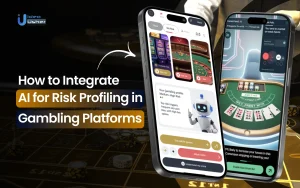Behind the Scenes: The Hidden Tech Powering Your Live Dealer Casino Experience

You join the table. The dealer smiles and welcomes you by name. The cards shuffle with a familiar whisper, and the roulette wheel spins with a satisfying, weighty clatter. It feels like you’re there, right? But you’re on your couch, miles away. The magic that bridges that gap—that creates this seamless illusion of presence—is a technological symphony playing just out of sight.
Let’s pull back the curtain. Here’s the deal on the complex tech that makes your live dealer game feel so incredibly real.
The Studio: More Than Just a Pretty Set
First things first, that elegant studio isn’t just a room with a table. It’s a meticulously designed broadcast hub. Think of it less like a casino floor and more like a miniature television studio. The lighting is perfect, controlled to eliminate harsh shadows and glare. The acoustics are treated to capture the crisp sounds of the game without any distracting echoes.
The Camera Crew You Never See
You’re not just watching a single static shot. The view seamlessly switches from an overview of the table to a close-up of the dealer’s hands, to a dedicated angle on the roulette wheel. This is achieved with a multi-camera setup, often including:
- Tabletop Cameras: These provide the main game action.
- Dealer Cameras: For that personal, human connection.
- Overhead & “Wheel” Cameras: Crucially, these offer unambiguous views of outcomes, building trust.
- Picture-in-Picture (PiP) Feeds: So you never miss a detail, even when the main view changes.
And honestly, the most impressive part? It’s all operated by sophisticated robotics and automation. Cameras pan, tilt, and zoom on pre-programmed paths, directed by a control room team that ensures you get the best view at the right moment.
The Digital Highway: How the Video Gets to You
This is where things get really technical. Capturing the video is one thing; getting it to your device without lag or stutter is another beast entirely. The entire system is built for low-latency streaming. Latency is the enemy—it’s the delay between the live action and what you see on your screen.
Providers use powerful optical character recognition (OCR) technology. This is the secret sauce. OCR software, in real-time, scans the video feed and identifies specific game elements. It reads the value of the cards as they’re dealt. It tracks the number on the roulette ball the moment it settles. It’s like a super-fast, hyper-accurate digital eye that translates physical actions into instant data for the game interface on your screen.
| Component | Its Role |
| Studio Encoders | Compress the high-quality video into a streamable format. |
| Content Delivery Network (CDN) | A global network of servers that caches the stream close to you, reducing lag. |
| OCR Servers | Process the video feed to extract game data instantly. |
| Game Server | The central brain that syncs the video stream, OCR data, and your bets. |
This data is then synced with the betting interface you use to place your wagers. When the OCR system recognizes a “blackjack,” it instantly tells the game server to pay out the appropriate bets. It all happens in milliseconds.
The Human Element: Dealers and Control Rooms
Let’s not forget the people. The dealers are highly trained professionals, part actor, part game expert. They manage the game’s pace, interact with players via a monitor that shows chat, and are the friendly face of the operation. They work in shifts, often from state-of-the-art facilities in places like Latvia, Malta, or the Philippines.
Behind them, in a separate soundproofed room, sits the director and the production crew. They are the puppet masters, monitoring every stream, managing the camera switches, and ensuring the audio is crystal clear. They’re your invisible guardians of a smooth experience.
Security and Fairness: The Non-Negotiables
You might wonder, “How can I trust this?” It’s a fair question. The entire system is built on a foundation of security. The studios are monitored 24/7. The decks of cards are changed frequently, and the shuffling process is transparent. The RFID chips in the cards and the OCR tracking make it nearly impossible to manipulate the game without raising immediate red flags.
Furthermore, independent auditing bodies like eCOGRA regularly test and certify these games for fairness and Random Number Generator (RNG) integrity, even in the live environment. The technology doesn’t just create the experience; it actively protects it.
What’s Next? The Future of Live Dealer Tech
The innovation isn’t slowing down. We’re already seeing the first steps into a more immersive future. Think about live dealer game shows like Monopoly or Dream Catcher—they blend traditional game mechanics with flashy, entertaining sets, showing how the format is evolving.
And on the horizon? Technologies like Virtual Reality (VR) and Augmented Reality (AR) are poised to take it even further. Imagine not just watching a table, but sitting at it in a fully rendered 3D casino, able to turn your head and chat with the player next to you. The bandwidth and hardware aren’t quite there for the masses yet, but the prototypes exist. It’s coming.
So the next time you click on a live dealer blackjack table, take a second to appreciate the invisible dance of light, data, and engineering happening just behind the dealer’s smile. It’s a remarkable feat of modern technology, all designed to bring a little piece of the casino floor directly to you.








